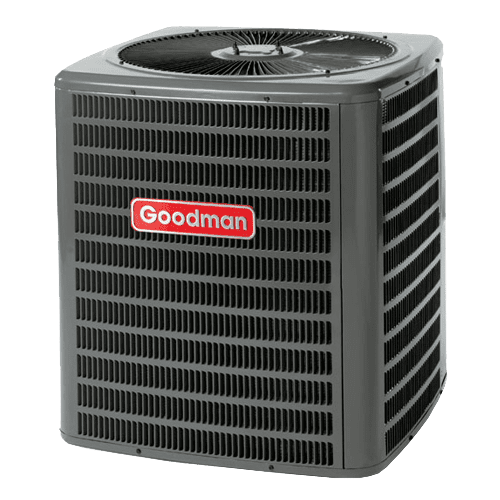Air Conditioning Repair Saves the Day
Summer is coming. If you know anything about the Midwest, you know that means a lot of heat and—what’s worse—a lot of humidity. It’s important to make sure that your home is prepared for the coming season, so check to see that your air conditioner is still preforming at tip top condition. If your current system has already been through several repairs and can no longer hold proper refrigerant levels, it may be time to invest in a new air conditioner. Though it may seem like a large investment, you’re saving money that would have been wasted on an inefficient lemon. Most new air conditioners are also under warranty, so you can rest easy knowing that you won’t have to worry about it going out on you. Before we get into air conditioner repair in Kansas City MO though, let’s take a look at the components of an air conditioner, types of air conditioners, and why the summer months can be miserable without one.
Function of an Air Conditioner
An air conditioner cools the indoor air, regulate air temperature through the thermostat, and sucks out airborne particulates from the circulating air. Not only that, but they also act as dehumidifiers since temperature is part of relative humidity. By decreasing the temperature of a volume of humid air, you release part of the moisture. This explains why air conditioners discharge water on humid days. The drains and moisture-collecting pans (pictured below) help regulate this. An air conditioner’s primary function though is to refrigerate your home and move air indoors and outdoors. If it isn’t performing these functions, you may need air conditioning repair in Kansas City MO.
Main Parts of an Air Conditioner
There are four main parts that make up an air conditioner:
- Evaporator
- Condenser
- Expansion Valve
- Compressor
The evaporator is on the cold side of the air conditioner. It’s in the same area as the fan that blows air over the chilled coils and into your home. Oddly enough though, there’s also a hot side to your air conditioner. This side is made up of the compressor, condenser, and a fan to vent hot air coming off the compressed refrigerant to the outdoors. The expansion valve is located between the two sets of coils, and it regulates how much of the compressed liquid refrigerant moves into the evaporator. From the evaporator, the refrigerant expands and changes back into a gas due to a pressure drop. The refrigerant gas is turned back into a liquid via the compressor. This mechanism is a large electric pump that pressurizes the gas.
There are some variations in air conditioners though. For example, window air conditioners house all of these parts in a small metal box that is installed into a window opening. Hot air is vented from the back of the unit while condenser coils and a fan re-circulate and cool the indoor air. These air conditioners operate by closing the window down on the unit, plugging the system in, and turning it on. This simple-to-use option is made up of a compressor, expansion valve, hot coil, chilled coil, two fans and a control unit.
Split-System Air Conditioners
Larger air conditioning systems are typically split-system units. This means that it splits the hot side from the cold side. The cold side goes into a furnace or other air handler, which blows air through the coil and circulates the air throughout the building via a series of ducts. The hot side (condensing unit) is placed outside the building in a completely separate location, hence the name ‘split-system’. What distinguishes a split-system from a window air conditioner is that the split-system has a higher capacity, which makes the coils and compressor larger. For larger buildings, condensing units are normally located on the roof due to the system’s size. The split-system units don’t always work well with larger buildings. This is because the distance between the condenser and air handler is too great for running a pipe. When the pipe becomes too long, you have to deal with lubrication issues in the compressor. A chilled water system is a good alternative if you’re dealing with this problem. If you have issues with this system, you can contact someone for air conditioning repair in Kansas City MO.
Chilled Water Systems and Cooling Tower Air Conditioners
The great thing about chilled water systems is that there’s no distance limitation to the length of a chilled-water pipe. This type of air conditioner is typically located on the roof or behind the building. It works by cooling water to 40-45 degrees Fahrenheit, and then piping this chilled water through the building. Cooling water technology is a little different, because it doesn’t use air to dissipate heat from the compressor coils. Instead, a cooling tower us used to create a stream of cold water that runs through a heat exchanger. In turn, the hot condenser coils are cooled. The tower also blows air through a stream of water, which causes some of it to evaporate. The evaporation then cools the water stream. The downside to cooling tower air conditioners is that they require you to regularly add water to the system to compensate for the liquid lost through evaporation. The cooling strength of a water tower is dependent on the relative humidity of the air and barometric pressure.
Alternative Options
Geothermal heating and cooling systems, for example, tap into the renewable energy in the Earth’s surface to heat and cool spaces. It utilizes underground water pipes to absorb Earth’s temperature, saving up to 70% on your utility bills. It’s an environmentally friendly option that’s been approved by the U.S. Department of Energy and results in long-term savings. It’s also great because indoor components are easy to access and user friendly. They last 24 years, so it’s not something you have to worry about replacing. A closed-loop system is the most common. In the summertime, it reverses itself to cool the building by pulling heat through the pipes to deposit underground. Solar powered air conditioners are another option, though it’s new enough that the technology hasn’t been perfected yet.
Cooling Measurement
Air conditioners normally have their capacity rated in British thermal units (Btu), which is the amount of heat necessary to raise the temperature of 1 pound of water one degree Fahrenheit. For an energy conversion, one Btu is 1,055 joules. One ton equals 12,000 Btu. Now let’s put these numbers in perspective. A window air conditioner normally rates at 10,000 Btu, and a 2,000 square foot home has a 5-ton air conditioning system. This means that you would need 30 Btu per square foot. The energy efficiency rating (EER) of an air conditioner is called the Btu rating over its wattage. If you’re looking for a high EER, you’re going to have to pay a higher price. A more expensive air conditioner might cost $100 more to purchase, but it will cost less money to operate. If you have more questions about the tradeoff, contact someone who specializes in air conditioning repair in Kansas City MO (like us!).
Added Benefits
Not only does a properly functioning air conditioner prevent you from having a heat stroke, but it also reduces humidity. Humidity can cause damage to your house and belongings, attract pests, cause toxicity in your home, make you sick and even put you in a bad mood. Certain materials, like guitars or kitchen cabinets, can be very sensitive to humidity. Not only that, but humidity damage can lower the resale value of your home. Some studies have found that dust mite infestations are eliminated just by reducing the humidity below 50%. Higher humidity levels also increase your chances of dealing with chemicals like formaldehyde. Mold is related to humidity, too! An increased level of mold spores in the air can cause you to get sick, and many doctors recommend minimizing humidity in the home to help with respiratory issues. Air conditioning repair in Kansas City MO ensures you never have to worry about humidity taking over your home.
Midwest Humidity
If you’re from the Midwest, you know that unbearable humidity is a real thing. The flat terrain between the Gulf of Mexico and the Midwest has no geographical barrier to incoming humid air, and Dr. Jim Angel estimates that 25%-40% of atmospheric moisture comes from plants. Investing in air conditioning repair in Kansas City MO helps keep this humidity at bay, and ensures you can enjoy your summers.
Contact Us
At Anthony Plumbing, Heating and Cooling, we do everything possible to make sure you’re taken care of. Contact us to schedule a service, get a free estimate, or visit our showroom. We have the expertise to handle any air conditioning repair in Kansas City MO. You can even refer a friend if you’re satisfied with our services. With technicians that undergo over 100 hours of training each year, 24/7 availability for air conditioning repair, and a free, no-obligation analysis of your air conditioner, there’s no reason not to give us a call.

